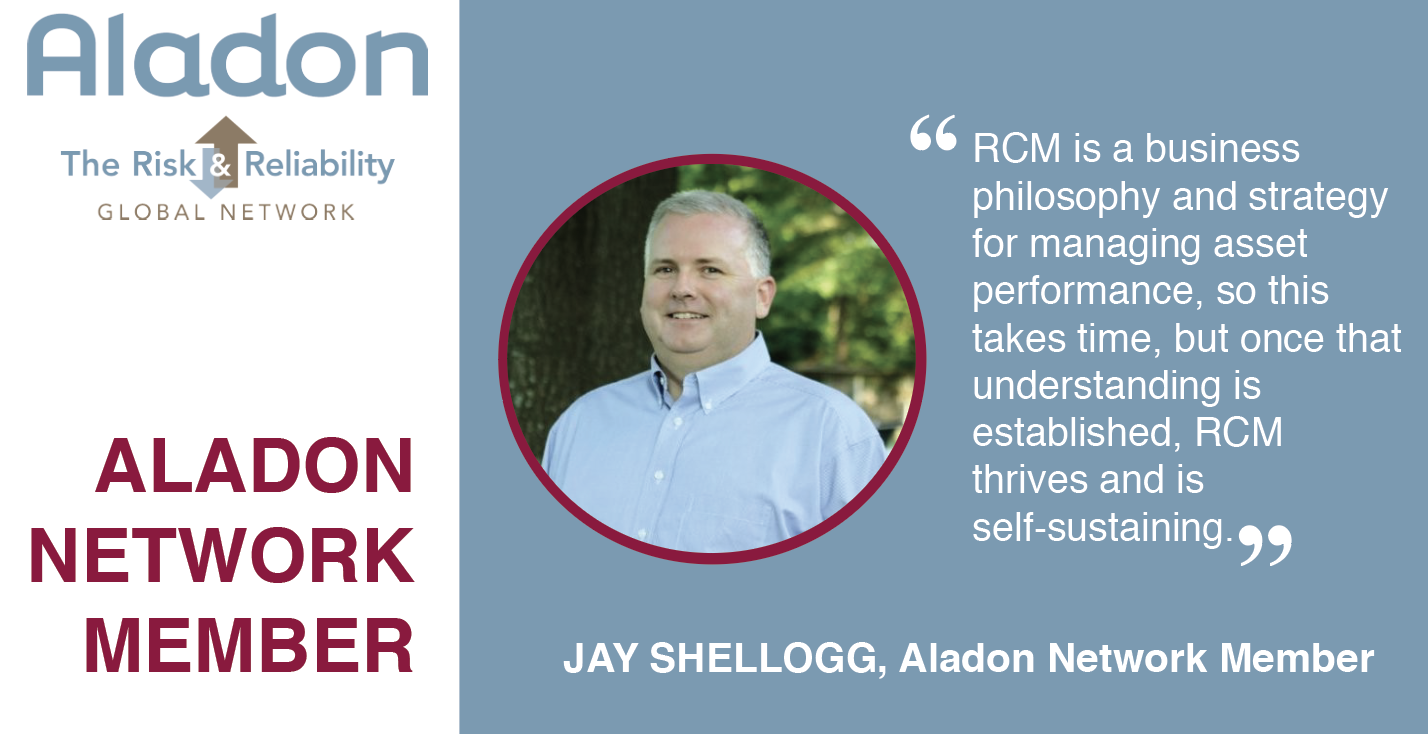When Jay Shellogg, owner and founder of Strategic Maintenance, first learned about Aladon’s approach to reliability centered maintenance, he immediately recognized its benefits and sustainability. He jumped at the chance to master RCM2. At the time he was a maintenance engineer working in the heavy process manufacturing industry of pulp and paper in Arkansas, at one of the largest uncoated freesheet mills in North America. Because of this experience, says Jay, he adds a user’s perspective to the Aladon RCM knowledge he brings to clients today. He’s seen firsthand the benefits of Aladon RCM’s and knows how to avoid costly mistakes. “Achieving practitioner status and membership in the network is a professional honor,” says Jay. “There are not many active Aladon practitioners, probably less than 100 in the world, so to be selected to join this group has been an honor.”
At the mill, Jay was a senior maintenance engineer and then became the reliability maintenance superintendent, leading a project for the budgeting and implementation of a RCM2-based reliability solution. The implementation of reliability solutions has been a key focus for him ever since. Today at Strategic Maintenance, Jay works primarily in the industries of forest products, consumer manufacturing, national laboratories, food and transportation. He has also worked with the Department of Defense and the Department of Energy.
The RCM Journey
In his years as an RCM consultant, Jay says the typical RCM journey begins with one individual who recognizes a need to improve asset performance and the way they are managed. Rarely does this individual know what RCM is, says Jay, so he spends as long as a few months explaining RCM and encouraging the individual to attend an introductory course. This is by far the most challenging part of his work as a Network Member. “Explaining to a client that, quite possibly, the way in which they have been managing maintenance and reliability is not just wrong and costly, but also dangerous. This is hard for some organizations to hear.” Part of the issue, says Jay, is that maintenance and reliability are not academically taught, and there is no formal standard of what it is. As a result, maintenance and reliability mean something different to every organizations. The Aladon method to RCM rectifies that.
The Aha Moment
Once participants attend the introductory course, they gain a new understanding that only RCM brings. This can be the most rewarding part of the job, says Jay. “Seeing the lightbulb go off in the client’s eye is rewarding, but when you see them begin to understand how deep and profound an impact Aladon RCM can have for their organization, that is overwhelmingly gratifying. To know that I helped them discover a new way of thinking about maintenance and reliability is profoundly rewarding.”
The next step in the process is for individuals to go back to their facilities and find other willing partners to bring about a culture change to maintaining assets. These employees will need to join an introductory course and then Jay can begin working with the company to develop an implementation plan. Finally, he helps them execute the plan.
RCM is not a project, but a process
If this sounds like a long journey, that’s because it is. From first contact to beginning implementation, the process may take 24 to 36 months. Once a company commits to RCM, though, the process takes off. Jay looks forward to this point when he becomes more of a coach and mentor than a teacher. “RCM is a business philosophy and strategy for managing asset performance, so this takes time,” says Jay, “but once that understanding is established, RCM thrives and is self-sustaining.”
